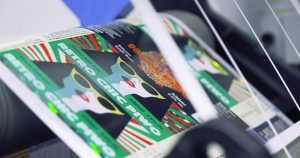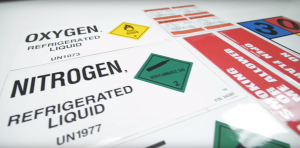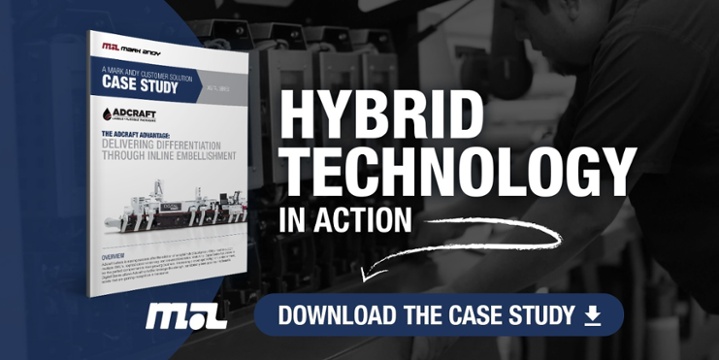Flexo or Digital Hybrid: Which Production Method is Right for You?
Market shifts are pushing converters to integrate new technologies into the workplace, making it increasingly common to have multiple production processes utilized in a single pressroom. This can be flexo, digital or digital hybrid means to print labels and packaging. However, newfound equipment variety can lead to a sense of uncertainty when determining what press to throw a new job on. It also propagates confusion regarding what production assets to add to the mix. Should the work be run on tried-and-true flexo or is it more efficient on a new digital hybrid?
To keep it simple, the answer is both. It’s no longer a “battle-to-the-death” situation or a matter of one technology being superior. A progressive production environment is all about using the optimal balance of each complementary process ability to enhance the overall workflow. This job mix optimization allows peak profitability, providing customers with what they need in a way that positively impacts the printer’s pocketbook. In this piece, we’ll dig into some loose guidelines for when to run a job digital or flexo. We’re the first to admit that application specifics and operational requirements are unique, but the below should serve as a good framework to make the right production decisions.
Run Length
The most common reason to run a job either hybrid or via a purely flexographic process is run length or units per job. Flexo presses were designed to tackle long and macro label production runs. It’s important to note that modern flexographic platforms, such as the Performance Series, have brought greater efficiency to shorter run lengths on flexo, especially in the realm of flexible packaging.

Craft beer applications like the label feature above are short-run and prime candidates for digital production.
The true profitability for short run, however, lies with digital, and more specifically hybrid. This is because the equipment requires minimal set-up time and cost to prepare a production run. Faster and relatively inexpensive make readies make digital hybrid a viable solution for low volume (or high mix) work that is frequently required by brands. Hybrid streamlines the steps needed to get small batch orders from art to finished roll.
Application Requirements
There are certain applications that are more logical to be run on a digital hybrid press. These consist of label, packaging, or light carton runs that require the use of sophisticated Variable Data Printing (VDP). VDP applications are growing in popularity, as modern consumers prefer packaging tailored to unique personalization needs. Digital allows you to input custom information without the costs of creating and setting up unique plates for each element. A notable caveat to this point is a full-production flexo press with a rail-mounted marking unit.
Substrate Requirements
Oftentimes something as simple as the material a customer requests impacts what press you should or have to use for production. Certain thin materials are well-suited to match the web transport of a flexo machine. Material compatibility with inksets or regulatory requirements also dictates the machine you produce your job on. It’s important to do your homework before putting it on the press to ensure you don’t have any reruns or compliance issues in your future.
Frequency of Artwork Changes
For certain industries, such as the durable industrial, food, or pharmaceutical sector, regulatory changes require frequent artwork modifications. When producing jobs of this nature on a flexo press, this means the need to make new plates every time the fine print changes. Under these circumstances, digital production makes the most sense. Digital hybrid allows tweaks in color, copy, or design to be completed painlessly in pre-press with minimal downtime. This lends itself to more competitive pricing and an increase in goodwill and trust from customers.

Durable labels often require artwork changes due to regulations. The job printed above was done by our friends at Label Solutions on their Digital Series press.
If you are running a job that is a tried and true product, requiring infrequent short-term design changes, flexo is the way to go for peak efficiency.
Turnaround Time
Due to the complexity of many flexo applications, setups are slightly more labor-intensive than with digital. This is a small piece of the puzzle, but valid to evaluate when choosing to run something flexo or digital. Platemaking, plate mounting, and changeovers are important, yet time-consuming processes that can potentially delay the product from getting closer to the door and closer to the end-user. Often times if a customer requires proof or sample, digital is a good choice. If your customer’s need is urgent, and the application checks some of the other boxes above, hybrid production is your best bet.
Getting Started
If you currently own both digital and flexo technologies, the first step in optimizing your workflow is taking a step back and examining how you run your jobs. If you use the above as a guide, you should be in good shape. The true benefit of digital is letting your high-output flexo workhorses continue to print the jobs that make the most sense. In the end, it’s most important to choose the technology that keeps the customer happy, meeting their needs, and exceeding their expectations.
About the Author
Chandler Davis is a Marketing Specialist at Mark Andy. She is a University of Missouri graduate with a passion for social media, packaging design, and all things printing. You can also find Chandler on LinkedIn.
